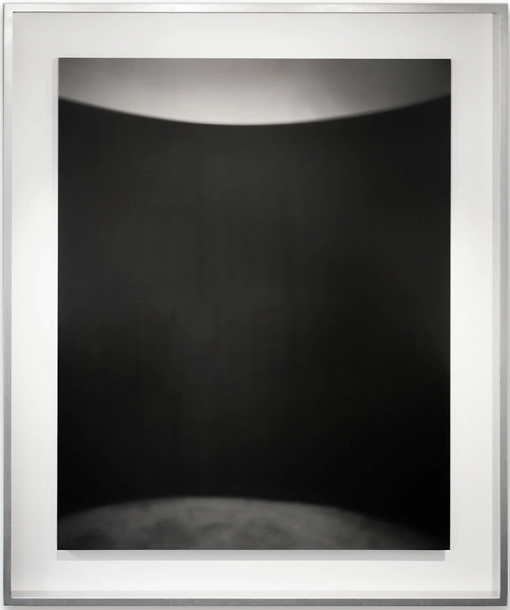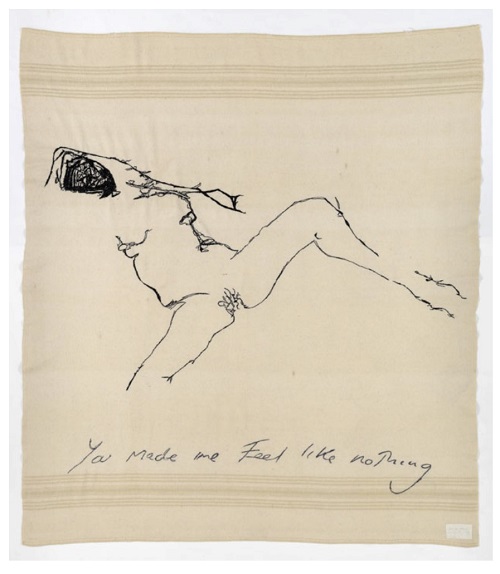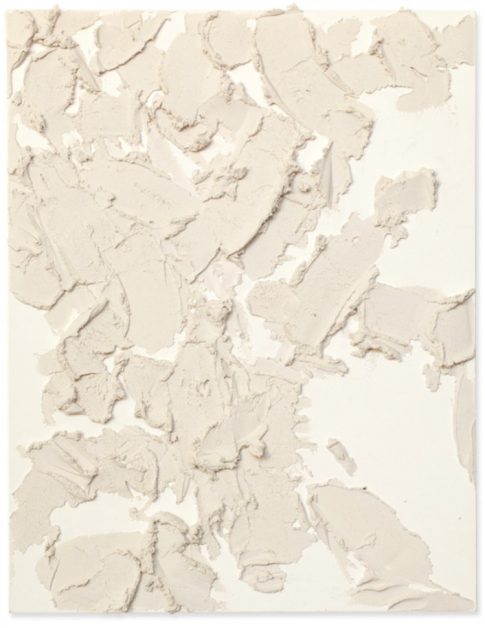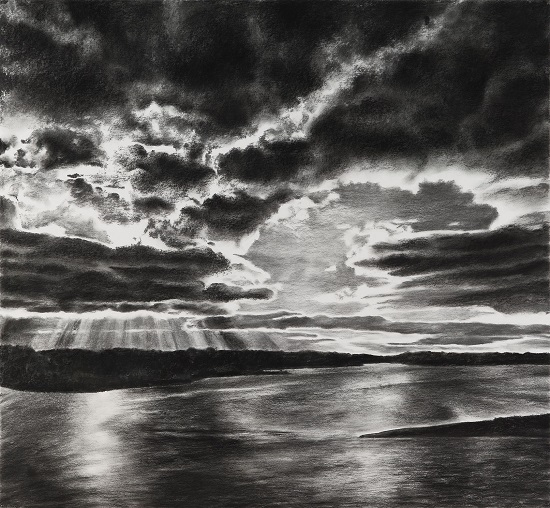For amusement sometime, take a thick, print (not online) art magazine stuffed with gallery ads and rotate it upside down. Turn the pages and guess which works were created in New York or London and which were not, without the advantage of seeing the address. It’s simple, and with a little practice you’ll be at 80 percent.
Artists in the two primary Western art centers activate their work with idea; they tend to paint, sculpt or film with grey tones. Artists outside of these metropoli reach for the rainbow. If you see a color riot thrown on by Earl Scheib with a leaf blower, it was likely done in the boonies.
Color is for separation, not activation. Or as Tripoli Patterson of Tripoli Gallery in Southampton puts it: “color will not aid or inform.”
Tripoli Gallery’s current show is entitled “Black & White” and all the work shown is created with only black and white tones. It is Patterson’s instructive antidote to the tendency lately of the nouveau collector to purchase the nouveau gaudy. In this curious market phenomenon, the monied are chasing splashy daubers so anemic they can’t fill out their 15 minutes. (OK, I pinched that one.) If these collectors want to find out what the good stuff looks like … Tripoli has a great assemblage in “Black & White.”
The show includes mostly well-known—and a few downright famous—artists, including Katherine Bernhardt, Ross Bleckner, Quentin Curry, Tracey Emin, April Gornik, Takesada Matsutani, Angelbert Metoyer and Hiroshi Sugimoto, among others.
April Gornik often uses color in her landscape paintings, again as separation, but here she shows the advantage of black and white alone with her theatrical charcoal on paper landscapes. One can sit in front of her two pieces for hours and begin to wonder what color is for, actually. Usually it is extraneous.
.
.
Hiroshi Sugimoto is a world-ranked photographer originally from Tokyo and trained both there and at Art Center College of Design in Pasadena. At 69, he is at the height of his abilities and producing strong shows in high-end locales.
His dramatic installations of seascapes at the Mori Museum in Tokyo was one of the best attended shows in the museum’s history. That 2006 show, which I was fortunate to see, “Hiroshi Sugimoto: End of Time,” featured an unusual installation of a long table or bench, perhaps 100 feet long, in front of massive prints of becalmed oceans that visitors viewed in dim light.
Sugimoto’s quest then and in general is to photograph time, especially images that could have been seen a hundred million years ago, such as those seascapes, unchanged since the planet cooled.
Tripoli Gallery did a show of this seascape series in 2014 and now includes another captivating image, offered at $250,000, from a different group of photographs. In 2003 Sugimoto produced a sizeable series of shots taken of the Richard Serra sculpture “Joe,” which is sited in front of the Pulitzer Foundation for the Arts in St. Louis.
These moody shots on film, with a blurred and deliberately out of focus lens, allow the day’s light to re-sculpt the contours of this immense iron abstraction.
.

"Joe" by Hiroshi Sugimoto, 2004. Gelatin silver print, 58 3/8 x 47 inches (72 x 60 inches framed). Edition of 5. Courtesy Tripoli Gallery.
.
A group of three of Sugimoto’s photographs sold at Christie’s in May of 2007 for $1,650,000. His works are widely traded at auction and show an overall trend line of going upwards.
Nothing could be further from Sugimoto’s serene exterior formalism than the pained autobiographical work of the U.K.’s Tracy Emin, who is also included in this show. Pro forma, Emin shows a splayed nude image, presumably of herself, created in needlepoint, traditionally a woman’s craft. The piece, titled “Just Like Nothing,” continues her well-known themes of sexual betrayal and relationships gone wrong.
.

"Just Like Nothing" by Tracey Emin, 2009. Courtesy the Artist and Lehmann Maupin, New York and Hong Kong.
.
This popular artist famously showed her sloppy and stained bed at the Tate in London as an art object when she was a nominee for the coveted Turner Prize. What is not well known, or at least discussed, is her drawing ability, which are on view here, that landed her a professorship in drawing at the Royal Academy. She is one of the first two female professors since the Academy was founded in 1768.
Darius Yektai shows two works of cement on painting, reviving modernist imagery that is suddenly being fancied in shows about the world. The beginning of the modernist adventure, circa 1890s, held that this was a new found essentialism; the end of the modernist adventure, circa 1968, maintained that it was just another style. Hence the noisy period of post-modernism.
.

"Cement Painting 2" by Darius Yektai, 2015. Cement on canvas, 36 x 28 inches. Courtesy Tripoli Gallery.
.
I’m fond of the observation often attributed to G.K. Chesterton that “When people stop believing in God, they don't believe in nothing, they believe in everything.” This idea can be readily adapted to modernism: The problem when we quit believing in essential modernism was not that we believed nothing was art, the problem was we would believe anything was art.
I guess art makers and art lovers had to go through that period, but now the anything-is-art shtick is properly viewed as an art school lesson, which we pass through. Now many are returning to the streamlined aesthetic of ideas rendered cleanly.
____________________________
BASIC FACTS: “Black & White” is on view February 25 through April 30, 2017 at Tripoli Gallery, 30A Jobs Lane, Southampton, NY 11968. www.tripoligallery.com
_____________________________
Copyright 2017 Hamptons Art Hub LLC. All rights reserved.


Loved reading! Thanks James!!!